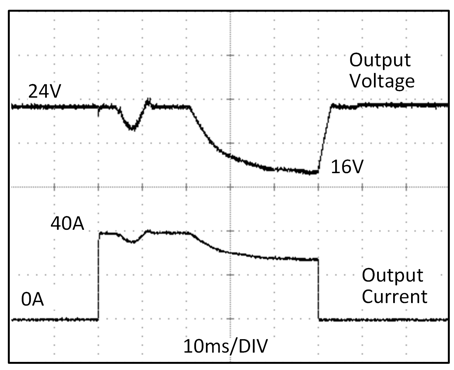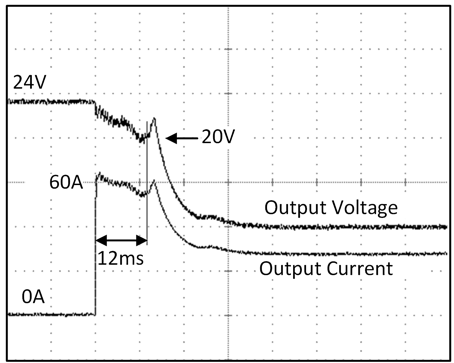Peak current capability
The unit can deliver peak currents (up to several milliseconds) which are higher than the specified short-term currents.
This helps to start current demanding loads. Solenoids, contactors and pneumatic modules often have a steady state coil and a pick-up coil. The inrush current demand of the pick-up coil is several times higher than the steady-state current and usually exceeds the nominal output current (including the Extra Power). The same situation applies when starting a capacitive load.
The peak current capability also ensures the safe operation of subsequent circuit breakers of load circuits. The load circuits are often individually fused with circuit breakers or fuses. In case of a short or an overload in one branch circuit, the fuse or circuit breaker need a certain amount of over-current to open in a timely manner. This prevents a voltage drop in adjacent circuits.
The extra current (peak current) is supplied by the power converter and the built-in large sized output capacitors of the power supply. The capacitors are discharged during such an event, which leads to a voltage drop at the output. The following three examples show typical voltage drops for ohmic loads:



Peak current voltage drops | |
|---|---|
Typically from 24 V to 16 V | At 40 A for 50 ms, ohmic load |
Typically from 24 V to 21 V | At 100 A for 2 ms, ohmic load |
Typically from 24 V to 17 V | At 100 A for 5 ms, ohmic load |